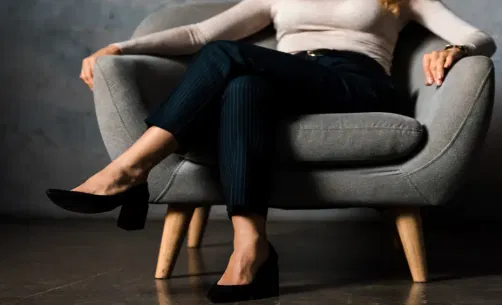The act of crossing one’s legs while seated is more than just a casual physical gesture—it’s a behavior embedded with cultural significance and shaped by centuries of societal norms and expectations. This simple movement, often done unconsciously, transcends individual expression and reflects deeply ingrained ideas about posture, etiquette, and gender roles. For women, especially, the way they position themselves while sitting has historically been the subject of scrutiny, symbolic interpretation, and even regulation. Across different time periods and societies, this gesture has been molded by social codes that dictate what is considered polite, elegant, or appropriate behavior for women in public and professional settings.
Throughout history, crossing one’s legs has frequently been seen as a sign of refinement, modesty, and self-control. In many Western societies, especially during the 18th and 19th centuries, literature, visual art, and etiquette guides depicted the seated woman as one who crossed her legs or ankles delicately, projecting an image of grace and demureness. This image aligned closely with the era’s ideals of femininity—passive, contained, and aesthetically pleasing. However, these norms are far from universal. In numerous Eastern cultures, for instance, sitting with one’s legs crossed—especially in the presence of elders or authority figures—can be interpreted as disrespectful or overly casual. In such contexts, posture carries powerful cultural meanings that reflect hierarchy, respect, and collective identity.
Even as definitions of femininity have evolved significantly over the decades, the practice of women crossing their legs remains widespread. This continued prevalence may be rooted in social conditioning that places importance on appearing composed, elegant, and contained. From a young age, girls in many cultures are taught, both directly and indirectly, how to sit “properly,” reinforcing subtle messages about bodily control and public image. Fashion, media, and artistic representation continue to shape these expectations, reinforcing standards that suggest how a woman “should” appear in social or professional settings. As a result, what may seem like an instinctive gesture often carries a heavy weight of social meaning and internalized norms.

At a psychological level, the act of crossing one’s legs while sitting can be interpreted in various ways. It may signify confidence and self-assurance, suggesting that the individual feels comfortable and in control of their space. Alternatively, it can also be a protective gesture—an unconscious way to create a physical barrier, signaling shyness, discomfort, or vulnerability. Many women instinctively cross their legs as a way to define and maintain personal space, especially in environments where they may feel overexposed or uneasy. In this context, the posture becomes a tool for self-regulation, offering a small sense of security and autonomy within potentially stressful or public interactions.
This behavior also plays a significant role in nonverbal communication. In both casual and formal settings, body language often speaks louder than words, and the position of one’s legs can reveal subtle clues about their emotional state and openness to social interaction. A closed-off posture—such as crossed legs with arms folded—might signal resistance, nervousness, or a desire to withdraw from engagement. On the other hand, a relaxed and balanced leg-crossing gesture might suggest calmness and attentiveness. These nonverbal cues influence not only how others perceive a person but also how conversations unfold, affecting tone, mutual comfort, and relational dynamics.
Understanding the layered meanings behind this simple action allows us to recognize how much of our body language is shaped not just by personal choice, but also by social structures and expectations. For women especially, every movement and posture can carry added significance—reflecting a lifelong negotiation between personal comfort, cultural norms, and societal gaze.


